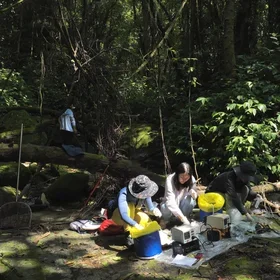Assaf Kedem has worked in communications for some of the biggest financial services firms in the world and is currently vice president of corporate communications at Mitsubishi UFJ Financial Group (MUFG). An alumnus of Columbia's Executive M.Sc. in Strategic Communication, Kedem now lectures on crisis communications for the program. Here he shares his insights into the evolving world of communications and provides advice for recent graduates.
Both the COVID-19 pandemic and recent U.S. protests over racial injustice have compelled organizations to issue statements that convey an unusual degree of empathy. What strikes you about this moment and the opportunities or challenges it presents for strategic communication?
The seismic events you’ve mentioned struck a chord with many—and touched off powerful expressions of solidarity on a national scale. Organizations of all sectors were not exempt. In their public statements, they sought to demonstrate to their stakeholders and to the public that they are attuned to the zeitgeist of this period in history. For communicators, it’s been an opportunity to humanize their organizations with candor and authenticity through heartfelt sentiments expressing compassion, understanding, and genuine desire for social justice. Students and practitioners in the communications field would have no problem finding plenty of inspiring examples. We’re living through a highly instructive moment.
Consumers and shareholders have shown impatience for corporate social responsibility initiatives that appear to be lip service or window dressing. How do you believe companies should approach CSR and the way they communicate about it?
When it comes to CSR, there’s communication—and then there’s action. Both are symbiotically linked in that each, on its own, is a necessary but insufficient condition for a successful integrated CSR policy. Your CSR communication is devoid of meaning if it isn’t backed by substantive measures, yet action alone is hardly effective if it isn’t promulgated.
How do you think the field of corporate and organizational communication has changed during your career—particularly in the time since you completed the program at SPS?
The principles and elements of effective communication have not changed—but technology has introduced new platforms, channels, and touchpoints for getting messages across in a flash to a broad audience. As a result, communication strategy and planning have become increasingly elaborate and time-sensitive. And each communication often needs to be tailored in multiple adaptations to the different mediums through which it is transmitted. Bottom line: Technology enables greater reach, immediacy, and creativity—yet it also requires work if it is to be harnessed to maximum potential.
Social media have been an element of communications for more than a decade. What effect do you think social media have had on communications, for better and worse, and how do you anticipate things evolving in the future?
In the “better” column I’d include two things: (I) the democratization of publishing, which means that every organization with a social media presence is now empowered to become its own unmediated broadcaster; and (ii) user-driven circulation, which means that other social-media participants are empowered to disseminate and engage with an organization’s message. They can share that message with their respective networks—thus broadening its reach—or register favorable opinions and sentiments about it, which could be a source of advocacy and message amplification.
Of course, the very things that make social media powerful can also work to your disadvantage. Since every social-media user—no matter how obscure or credentialed—can be given equal credence, bona fide journalists have lost their exclusive possession of authority as trusted sources of information. As a result, organizations are increasingly vulnerable to any narrative that anyone can portray about them. Social media is also a less wieldy environment for addressing rumors, speculation or negative publicity once they rapidly disseminate.
Has being an instructor in the program given you any new perspectives or insights into the field of communications?
I subscribe to the ancient Talmudic quote: “I have learned much from my teachers, more from my colleagues, and the most from my students.” There isn’t a single class I end without having learned at least one bright new idea or perspective from a student. Can you think of a greater privilege?
What advice would you give to new graduates of the program who are entering the field or exploring new opportunities, especially in the current economy?
When it comes to job hunting, “doing” is the new “searching.” Offer interviewers to complete a test project as a hands-on demonstration of your abilities. Treat each interview as a consultative opportunity for you to advise the organization on what it should do, and prepare a roadmap or strategy for how to approach the job responsibilities in question. Join a professional association as an active member and use your activity there to amass a body of work that would set yourself apart from other applicants. Try to get published in the field by pitching article ideas to magazine editors. If your ideas are accepted, volunteer to write about them as an external contributor. These are the types of things that can help differentiate you.
Is there anything you learned as an SPS student that you still turn to in your work?
“Communications, Ethics, and Persuasion” was one of the most important courses I took—and I revert to it often. It opened my eyes to the workings of message framing and the intricate considerations of ethical communication. Some may think they could simply intuit these things without having to study theory—but theory gives you the framework for thinking critically about these issues. It helps you create a mental map of how to approach various situations as a communicator. Theory formalizes how communication actually works. I find it both fascinating and highly practical.


